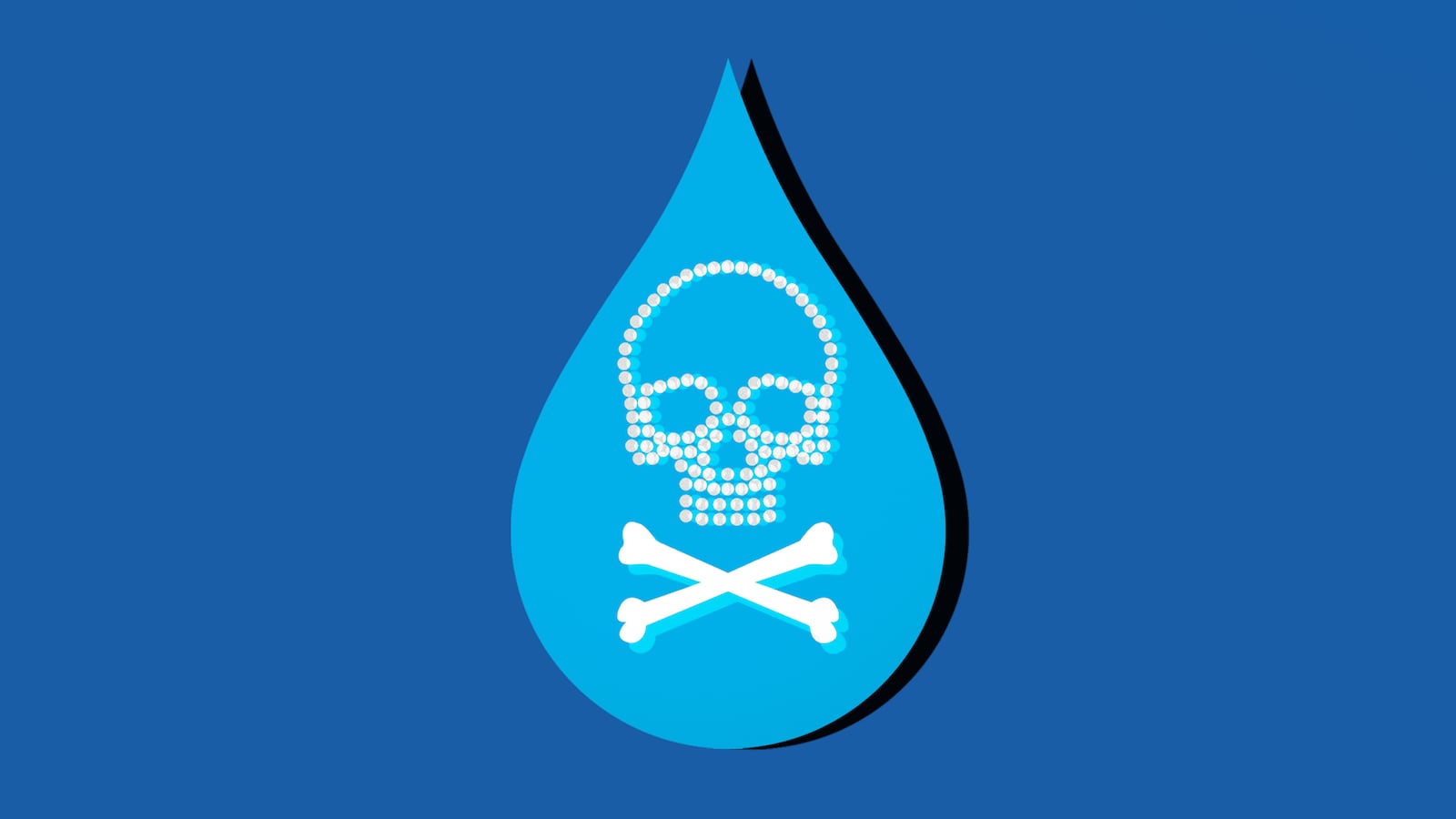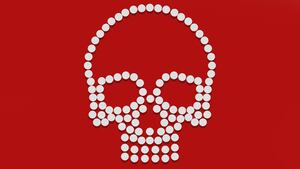Coroner Charles Kiessling had a problem on his hands.
He needed to determine the cause of death for a flood of opioid overdoses in his rural county in Lycoming, Pennsylvania—but he didn’t have the resources for expensive autopsies.
So Kiessling turned to a new oral swab technology developed by Steel Fusion Laboratories, a forensic laboratory based in Monseen, PA. The new technology solves a two-part problem for coroners: It enables an accurate, cost-effective, and quick way to determine if the death was due to a drug overdose or some other cause, allowing death investigators to prioritize their investigations.
Prior to the oral testing, the office would have to wait months for toxicology results.
“This technology has saved us thousands of dollars of every year,” Kiessling told The Daily Beast.
Kiessling had been searching for ways to manage his office’s $260,000 budget to process more than 400 cases annually. In 2017, there were 38 deaths from opioid overdoses, and in 2018, there were 27 deaths. If Kiessling had to process a full-blown autopsy for each overdose, it would siphon money and time from other investigations the office needs to complete.
Instead of ordering expensive toxicology tests ranging from $900 to $3,000 a time, they’re using a cotton swab similar to a Q-tip. Kiessling collects oral fluid from the inside of the deceased’s mouth, seals the swab inside a collection device with a tube, and sends it in a bio bag along with the chain of custody to the Steel Fusion laboratory.
Within 48 hours and for about $300 dollars, the lab measures the levels of drugs in the system, allowing a coroner to determine a cause of death.
It’s not a totally new technology.
Scientists at Intelligent Fingerprinting, a Cambridge-based drug detection company, coordinated with three British counties participating in a pilot program to determine if their company’s sweat-based drug technology worked.
Their premise: to use drops of sweat from cadavers’ fingers to determine if drugs were found in their systems. The coroners could legally perform the simple and inexpensive test without having to spend the time and funds to go through their court system and file for an inquest. If there was a positive drug result, the coroner could then embark on further investigation.
The technique caught on after the investigations into the British serial killer Dr. Harold Shipman in the late 1990s. Shipman was using opioids to kill his elderly patients and then signing a death certificate saying they had died natural deaths. After he was found guilty of murdering 215 people, coroners needed easily accessible tools to investigate suspicious deaths. In 2017, 85,552 post-mortem examinations were ordered by coroners in the United Kingdom, and missed opportunities in overworked coroner offices can be common.
Chemist David Russell, a professor at the University of East Anglia, first developed the technology after years of research into detecting drugs in fingerprint samples. By using drops of sweat collected from the fingers of cadavers, coroners can determine if there is a positive result for four drugs: cannabis, cocaine, opiates, and amphetamines.
Once drops of sweat, which are invisible to the naked eye, are collected from the fingerprints, the moisture, often less than a pinhead, is pressed onto a plastic cartridge about the size of a credit card which is then sealed with a tamper-evident cover that can’t be reopened. The cartridge is then placed into a reader the size of a desktop telephone and within 10 minutes the results appear. Each cartridge costs approximately $15 and drug results from 75 cadavers tested by the three coroner offices were more than 93-percent accurate, according to a 2018 study in the Journal of Analytical Toxicology.
“Using this early information can help coroners to determine to progresses the way they will assess these deaths,” Dr. Paul Yates, the medical director for Intelligent Fingerprinting, told The Daily Beast.
In Steel Fusion’s case, coroners from throughout Pennsylvania participated in a controlled study demonstrating that in the 34 cadavers tested, 32 had detectable drugs found within their oral fluid.
“People are dying everywhere,” said Kiessling, who has seen cases into his office double during the 20 years he’s been coroner. “We need all the tools we can get.”
Steel Fusion is the only laboratory in the U.S. to collect oral fluid from decedents. They developed the methodology and started distributing the kits in 2016, with Columbiana County, Ohio, the first to sign on,
“We are saving taxpayers thousands of dollars while helping coroners solve cases,” said lab supervisor Autumn Miller.
Since the swab determines if the deceased had enough drugs in their system to kill them, and there are no other obvious reasons like a gun shot or stab wound or strangulation, they could have had an overdose—Kiessling can confidently sign the death certificate without further inquiry.
Alternatively, he can direct his attention to unusual death findings.
Previously, coroners from Kiessling’s office would have had to travel almost two hours to Allentown in eastern Pennsylvania, the closest forensic facility, where an autopsy can be performed.
“It costs more than $2,000 per autopsy,” Kiessling explained. “We must transport the deceased nearly 150 miles to the forensic pathologist to have the autopsy completed. This requires at least one of my staff along with law enforcement officers to be out of the area for the entire day.”
Each forensic autopsy includes a forensic pathologist, autopsy assistant, law enforcement photographer, criminal investigator, and the coroner.
Kiessling is at the forefront of coroners utilizing technological innovations to conduct death investigations—in particular drug overdoses—bypassing costly autopsies or formal inquests, which can be hampered by a thicket of rules and regulations.
Of the 2.6 million annual deaths in the United States, medical examiners and coroners investigate 500,000 violent deaths in 2,400 jurisdictions, the National Science and Technology Council found in a 2016 report. While the number of opioid overdoses have risen in the United States, in March 2019 the CDC released a report showing fentanyl deaths soaring, the professionals investigating these deaths have not.
At best the country had half the number of forensic pathologists needed when the opioid crisis hit, according to medical examiner Jonathan L. Arden, president of the National Association of Medical Examiners.
“It is not just rural coroners offices struggling, large medical examiner offices aren’t doing autopsies for drug overdoses because they simply can’t process the bodies,” Arden said.
Not only are coroners overwhelmed by the onslaught of decedents, they're not sure how to handle these concerns.
“With fentanyl and various high-powered analogs of that drug being prevalent, first responders, including coroners, are put at risk when coming into contact with the remains of someone who we may not know had overdosed on these drugs,” Essex County N.Y. Coroner Francis W. Whitelaw, told The Daily Beast via email.
“A quick screen from a fingertip may help reduce that risk.”
The conflict, however, is making sure that oral fluids or sweat from a cadaver can properly ascertain the correct drug test results. Critics contend that while new technology can be beneficial using any other route besides an autopsy can provide misleading information, possibly overlooking other causes of death or a wrongful determination.
“Are we missing anything by using this technology?” Kiessling said. “Probably on some cases—but we are doing best we can on our budget.”








